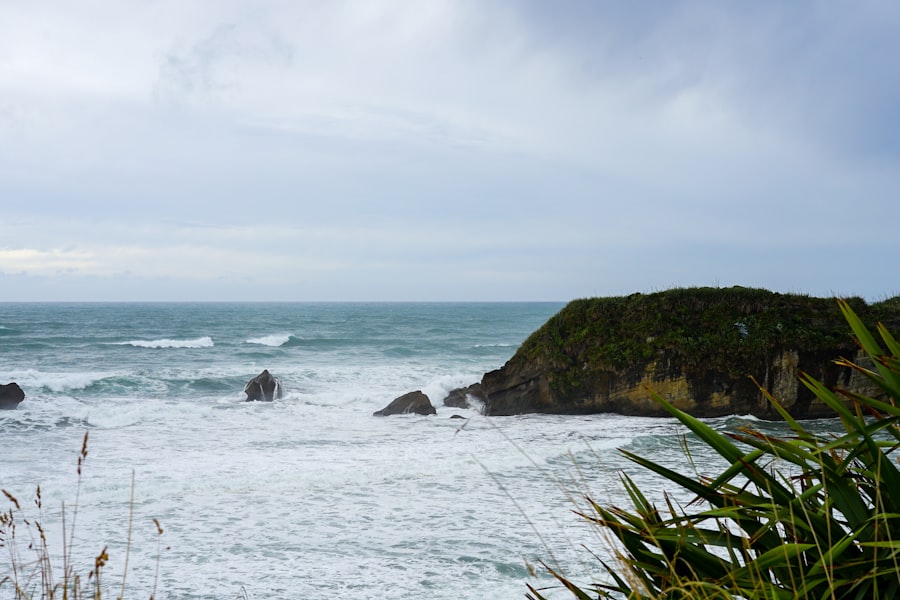Download links
How to install Preserving the 30jili Banaue Rice Terraces APK?
1. Tap the downloaded Preserving the 30jili Banaue Rice Terraces APK file.
2. Touch install.
3. Follow the steps on the screen.
Description
The Banaue Rice Terraces, often referred to as the “Eighth Wonder of the World,” are a remarkable feat of engineering and agriculture that date back over 2,000 years. Located in the mountainous region of Ifugao in the Philippines, these terraces were carved into the mountainsides by the indigenous Ifugao people. The construction of these terraces is believed to have begun around 2000 BC, although some estimates suggest that they may be even older.
The terraces were built using simple tools and techniques, showcasing the ingenuity and resourcefulness of the Ifugao ancestors. They utilized a system of irrigation that harnessed the natural flow of water from the mountains, allowing them to cultivate rice in an otherwise challenging environment. The terraces cover approximately 2,000 square kilometers and are a testament to the Ifugao people’s deep understanding of their environment.
The construction process involved not only physical labor but also a profound connection to their cultural beliefs and practices. The Ifugao people viewed rice as a sacred crop, integral to their identity and way of life. The terraces are not merely agricultural fields; they are a reflection of the Ifugao’s social structure, spirituality, and relationship with nature.
Over centuries, this intricate system has been passed down through generations, with traditional farming practices still being employed today. The rice terraces have become a symbol of resilience and sustainability, embodying the harmony between human activity and the natural world.
Key Takeaways
- The Banaue Rice Terraces are believed to have been built over 2,000 years ago by the Ifugao people without the use of modern tools.
- Preserving the Banaue Rice Terraces is crucial as they are not only a UNESCO World Heritage site but also a vital source of livelihood and cultural identity for the Ifugao people.
- Threats to the preservation of the Banaue Rice Terraces include environmental degradation, urbanization, and the migration of younger generations away from traditional farming practices.
- Efforts to preserve the Banaue Rice Terraces include the establishment of terrace maintenance programs, community-based tourism initiatives, and the promotion of sustainable farming practices.
- The Banaue Rice Terraces hold immense cultural significance for the Ifugao people, serving as a symbol of their ingenuity, resilience, and deep connection to the land.
- Ways to support the preservation of the Banaue Rice Terraces include visiting responsibly, supporting local initiatives, and spreading awareness about the importance of preserving this cultural and agricultural wonder.
The Importance of Preserving the Banaue Rice Terraces
Preserving the Banaue Rice Terraces is crucial not only for their agricultural significance but also for their cultural heritage. These terraces are a living testament to the ingenuity of the Ifugao people and their sustainable agricultural practices. As a UNESCO World Heritage Site since 1995, the terraces have gained international recognition, highlighting their importance as a cultural landscape that reflects human adaptation to the environment.
The preservation of these terraces ensures that future generations can continue to learn from and appreciate this unique agricultural system. Moreover, the rice terraces play a vital role in maintaining biodiversity in the region. The traditional farming methods employed by the Ifugao people promote a diverse ecosystem, supporting various plant and animal species.
By preserving the terraces, we also protect the rich biodiversity that thrives in this unique environment. This ecological balance is essential for sustaining not only local agriculture but also the overall health of the region’s ecosystems. The terraces serve as a model for sustainable farming practices that can be applied in other parts of the world facing similar environmental challenges.
Threats to the Preservation of the Banaue Rice Terraces

Despite their historical and cultural significance, the Banaue Rice Terraces face numerous threats that jeopardize their preservation. One of the most pressing issues is climate change, which has led to unpredictable weather patterns, including prolonged droughts and heavy rainfall. These extreme weather conditions can cause soil erosion, landslides, and damage to the irrigation systems that are crucial for maintaining the terraces.
As a result, many farmers struggle to sustain their crops, leading to a decline in traditional farming practices. In addition to climate change, urbanization poses a significant threat to the rice terraces. As tourism increases in popularity, there is a growing demand for infrastructure development, including roads, hotels, and other facilities.
This development often encroaches upon the terraces themselves, leading to further degradation of this fragile landscape. Additionally, younger generations are increasingly migrating to urban areas in search of better economic opportunities, resulting in a decline in traditional farming knowledge and practices. This loss of cultural heritage is compounded by the fact that many young people are less inclined to engage in agriculture, viewing it as labor-intensive and less lucrative compared to other career paths.
Efforts to Preserve the Banaue Rice Terraces
| Effort | Metrics |
|---|---|
| Community Engagement | Number of local community members involved in preservation activities |
| Conservation Projects | Area of terraces restored or maintained |
| Educational Programs | Number of students or visitors educated about the terraces’ importance |
| Government Support | Amount of funding allocated for preservation efforts |
In response to these threats, various efforts have been initiated to preserve the Banaue Rice Terraces and promote sustainable agricultural practices among local communities. One notable initiative is the establishment of community-based programs aimed at revitalizing traditional farming techniques. These programs often involve training sessions for local farmers on sustainable practices such as organic farming, crop rotation, and soil conservation methods.
By empowering local communities with knowledge and resources, these initiatives aim to ensure that traditional agricultural practices are passed down through generations. Additionally, local government units and non-governmental organizations have collaborated on projects focused on environmental conservation and restoration.
By restoring native vegetation around the terraces, these initiatives help maintain the delicate balance of the ecosystem while also enhancing the aesthetic value of the landscape. Furthermore, educational campaigns aimed at raising awareness about the importance of preserving the rice terraces have been implemented to engage both locals and tourists in conservation efforts.
The Cultural Significance of the Banaue Rice Terraces
The cultural significance of the Banaue Rice Terraces extends far beyond their agricultural value; they are deeply intertwined with the identity and traditions of the Ifugao people. The terraces are not just fields; they represent a way of life that encompasses spirituality, community bonding, and cultural practices.
These rituals often involve offerings to deities and ancestral spirits, emphasizing the spiritual connection that the Ifugao people maintain with their land. Moreover, the rice terraces serve as a source of pride for the Ifugao community. They symbolize resilience in the face of adversity and showcase the ingenuity of a culture that has thrived for millennia in a challenging environment.
The terraces are also a focal point for cultural tourism, attracting visitors from around the world who seek to experience this unique landscape and learn about its history. This influx of tourists can provide economic opportunities for local communities while simultaneously raising awareness about the importance of preserving this cultural heritage.
Ways to Support the Preservation of the Banaue Rice Terraces

Responsible Tourism Practices
One effective way individuals can contribute is by promoting responsible tourism practices when visiting the area. Tourists should be encouraged to respect local customs and traditions while minimizing their environmental impact.
Supporting Local Communities
Engaging with local guides who are knowledgeable about sustainable practices can enhance visitors’ understanding of the cultural significance of the terraces while providing economic support to local families. Additionally, financial contributions can play a crucial role in preservation efforts. Donations to organizations focused on conservation projects or community development initiatives can help fund programs aimed at revitalizing traditional farming practices or restoring damaged areas of the terraces.
Raising Awareness and Economic Sustainability
Supporting local artisans and businesses that produce traditional crafts or food products can also contribute to economic sustainability within the community. Furthermore, raising awareness about the importance of preserving cultural heritage sites like the Banaue Rice Terraces through social media campaigns or educational programs can mobilize support on a larger scale. By sharing stories and information about these terraces, individuals can inspire others to take action and advocate for preservation efforts.
Ultimately, collective action at both local and global levels is essential for ensuring that this remarkable cultural landscape endures for future generations to appreciate and learn from.
FAQs
What are the Banaue Rice Terraces?
The Banaue Rice Terraces are ancient terraces carved into the mountains of Ifugao in the Philippines. They are often referred to as the “Eighth Wonder of the World” and are a UNESCO World Heritage Site.
How old are the Banaue Rice Terraces?
The Banaue Rice Terraces are estimated to be over 2,000 years old, making them one of the oldest and most remarkable examples of terrace farming in the world.
What is the significance of the Banaue Rice Terraces?
The terraces are not only a stunning feat of engineering and agriculture, but they also hold cultural and historical significance for the indigenous people of the region, particularly the Ifugao tribe.
How were the Banaue Rice Terraces built?
The terraces were built by hand, with the Ifugao people using minimal tools and primarily relying on their knowledge of the land and natural resources. The construction of the terraces is a testament to the ingenuity and skill of the ancient Ifugao people.
What is the current state of the Banaue Rice Terraces?
While the terraces remain a breathtaking sight, they are facing challenges such as erosion, deforestation, and the migration of younger generations away from traditional farming practices. Efforts are being made to preserve and protect the terraces for future generations.





